Wednesday, September 22, 2021 | Written by Mira
The Leonardo Program is a true hidden gem of Georgia Tech-Lorraine. I didn’t know about this until our welcome orientation. Professor Sonia Serafin created the Leonardo Program to give students a chance to have cultural experiences that would otherwise be inaccessible. With a focus on cultural immersion and the arts, the Leonardo Program offers various activities and events throughout the semester.
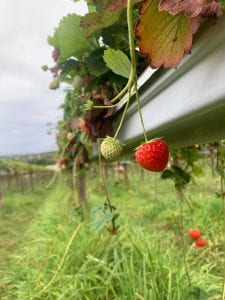
On Tuesday afternoon, we went fruit, vegetable, and flower picking at a local farm, Cueillette de Peltre (http://cueillettedepeltre.fr/)! Georgia Tech-Lorraine provided a shuttle to and from the farm so for an hour and half we could pick whatever we wanted. The main attraction? Strawberries.
After getting instructions of logistics, we made a beeline for the “fraises”. There were rows and rows and rows of strawberries! They were some of, if not, the best, freshest strawberries I’ve ever eaten! Not a fan of strawberries? No worries. This farm was massive, and they grew everything you could want: tomatoes, apples, peppers, all sorts of herbs, carrots, cauliflowers, different kinds of lettuce, flowers, eggplants… The best thing about Cueillette? The prices. As college students without a meal plan, the low prices were a major win. Someone bought a whole bag, full of produce, for 10 euros!
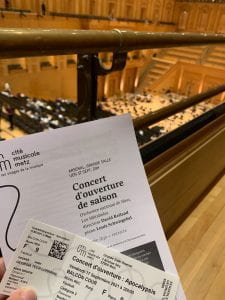
On Friday evening, the Leonardo Program provided tickets to the Orchestre National de Metz’s first concert of the season. I don’t know much about orchestra concerts; in fact, the only orchestra concerts I’ve ever been to have been high school orchestras. I was definitely looking forward to whatever this experience would bring. The first piece was quite startling, fittingly named “Apocalypsis.” With a mixture of French, Latin, and English lyrics, the chorus resonated around the venue in ominous echoes. My favorite thing was watching one of the musicians play seven different instruments in two ways each to create some of the most dynamic and interesting sounds to accompany the chorus and string orchestra.
After being thoroughly confused for the first twenty minutes (the length of the piece), there was a long, ebbing and flowing round of applause. I lost track of how long the applause lasted, but it seemed like a solid ten minutes of clapping.
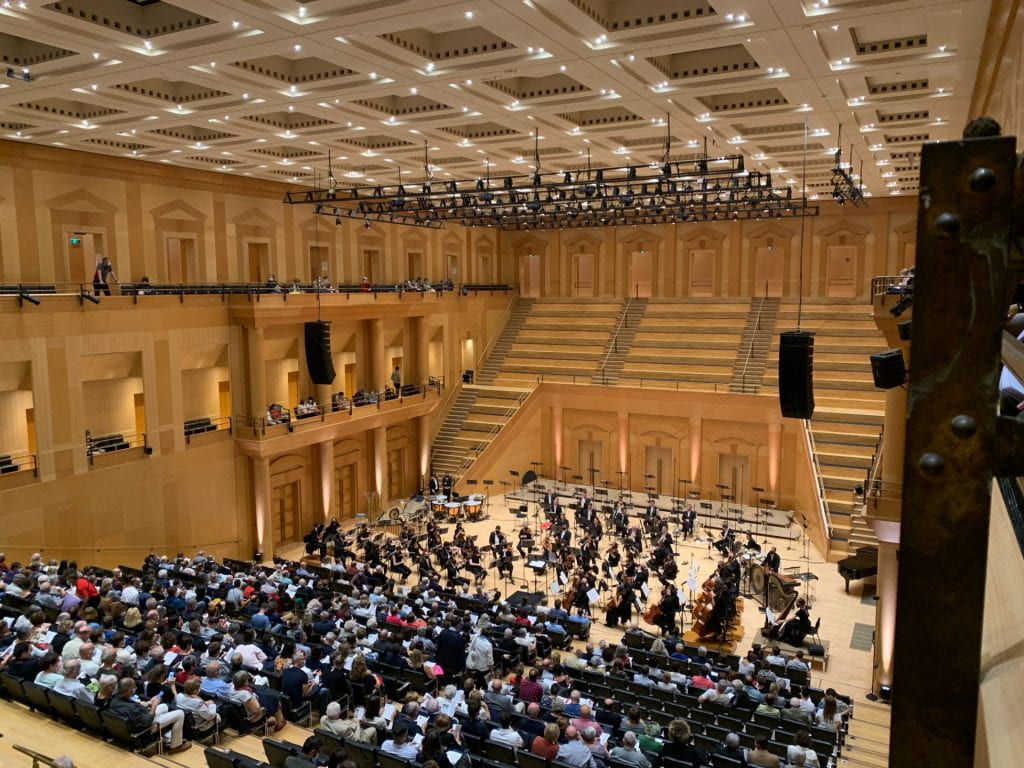
The other three pieces were more what I was expecting an orchestra concert to entail. Lots of piano and strings. The third piece highlighted the piano played by Louis Schwizgebel, a Swiss pianist who has played all over the world at just 33 years old (https://www.louisschwizgebel.com). The audience loved the piano piece so much (and rightfully so), that the resounding applause shifted to a rhythmic applause with a steady beat. Having not been briefed in orchestra concert etiquette, the shift in applause was a little unsettling; however, Professor Serafin later told us that this rhythmic applause is a sign to the musicians that the audience wants an encore. And that’s exactly what happened. I’ve only ever experienced planned encores at the end of a concert but this was in the middle of the show, unplanned!
At the end of the show, an audience member yelled “Bravo!” before the concert hall erupted in applause. Professor Serafin knows one of the flautists, and we got to meet her very briefly outside the venue. I am so grateful for the immersive experiences I’ve had this week, and I am only more excited for the semester to come. Professor Serafin even teased a fun “name that tune” event with some of the members of the orchestra coming to Georgia Tech-Lorraine (pandemic-permitting of course). To anyone interested in Georgia Tech-Lorraine, take advantage of these events because I guarantee you, you’ll never have such a combination of unique experiences.

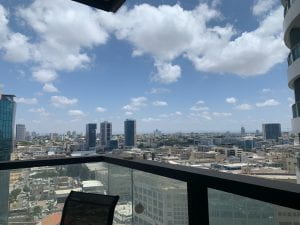
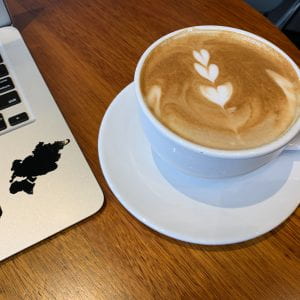
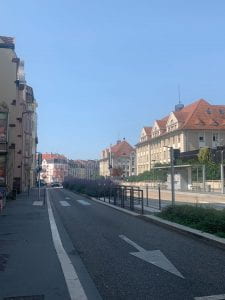
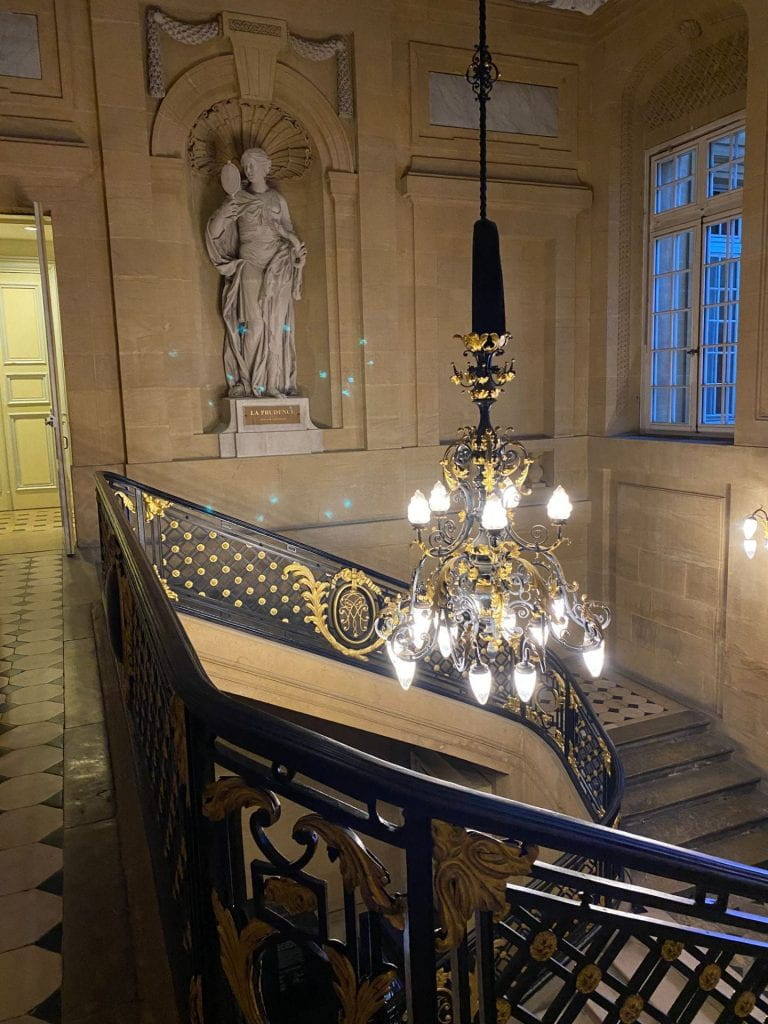

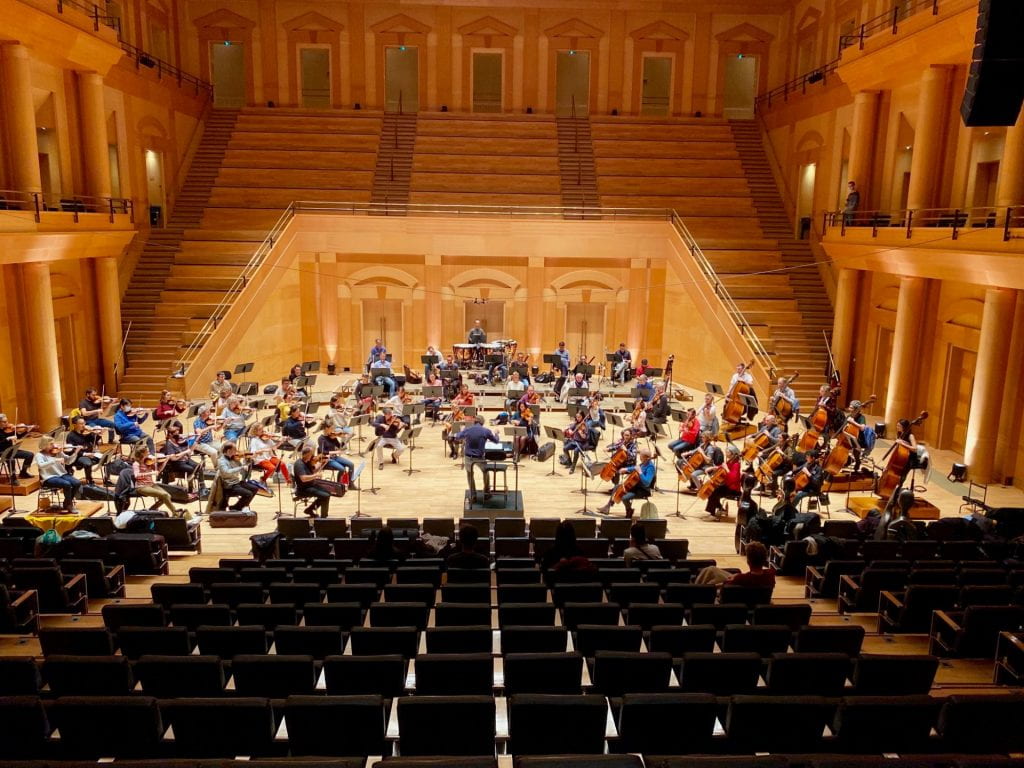
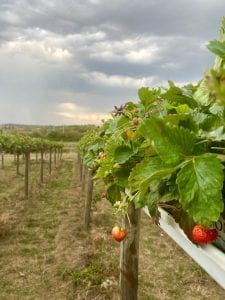

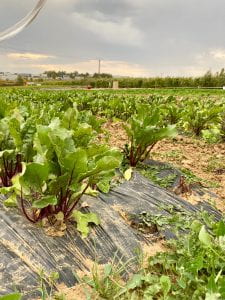
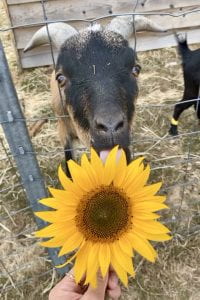
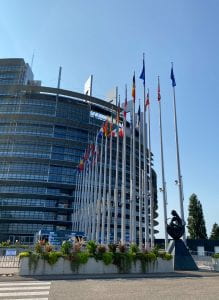
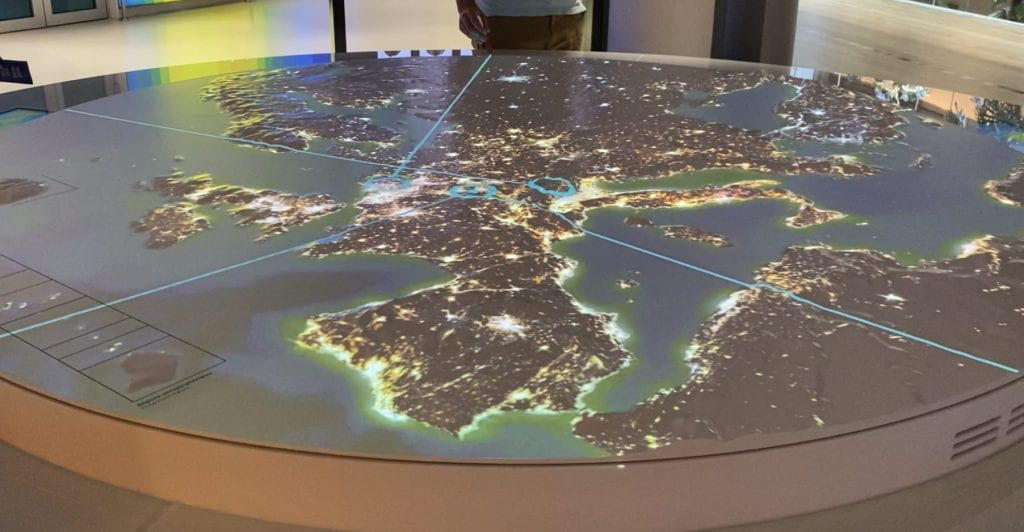
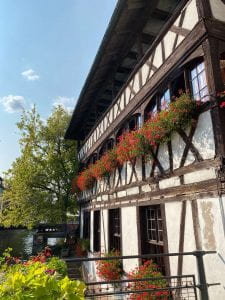
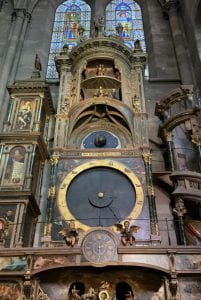
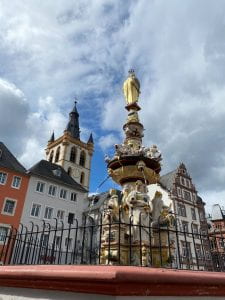

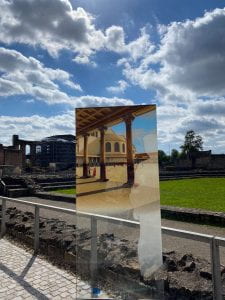
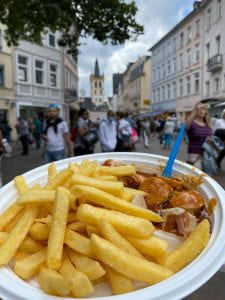

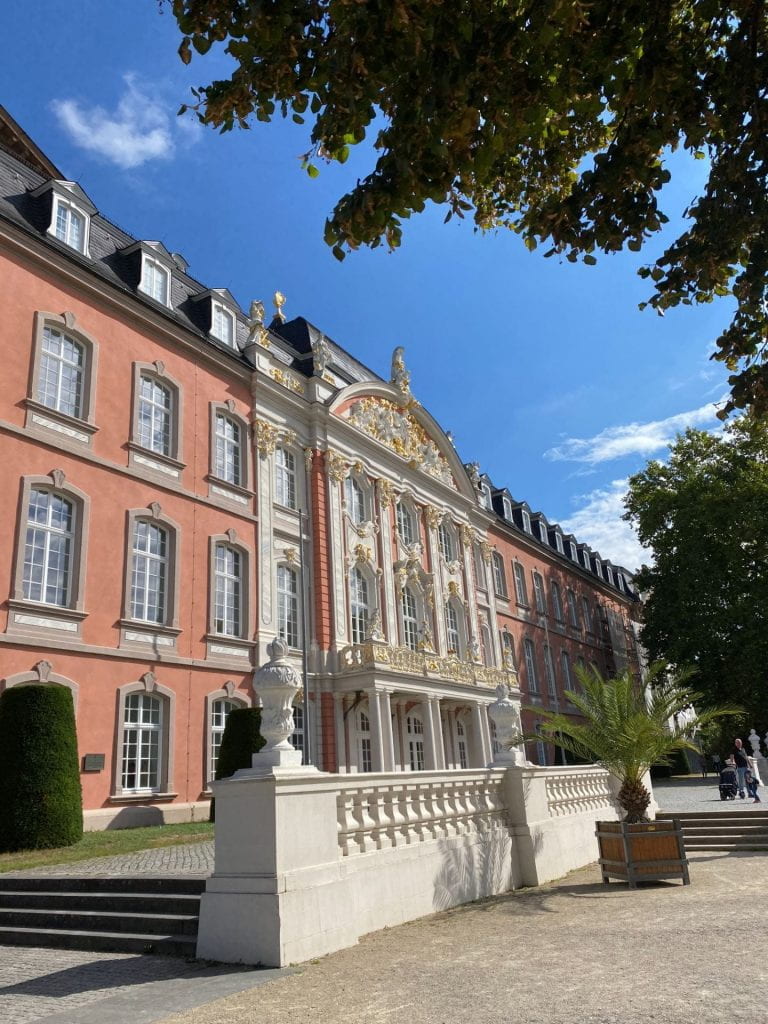

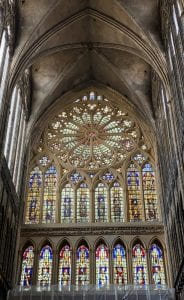

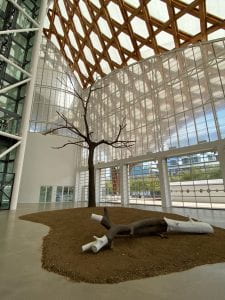
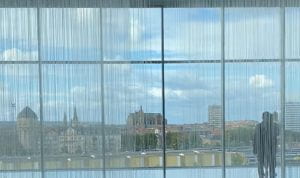
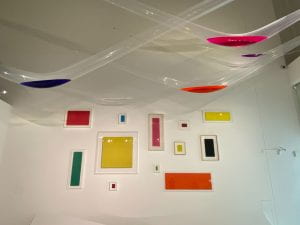
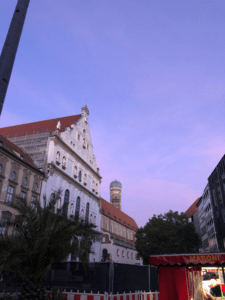 us went to get coffee or hot chocolate and then to explore the English Gardens, as this was right by where we were supposed to meet for dinner. It was beautiful outside and felt so good—maybe I can bring these European temperatures back to Atlanta! After wandering around for an hour, we made it to the restaurant where we were meeting Georgia Tech alumni for dinner. The HTS professor arranged this dinner so that we could network and hear about working or interning in Europe. We all were able to learn lots from the experience. We returned to our hostel at about 1:00 AM and immediately went to bed.
us went to get coffee or hot chocolate and then to explore the English Gardens, as this was right by where we were supposed to meet for dinner. It was beautiful outside and felt so good—maybe I can bring these European temperatures back to Atlanta! After wandering around for an hour, we made it to the restaurant where we were meeting Georgia Tech alumni for dinner. The HTS professor arranged this dinner so that we could network and hear about working or interning in Europe. We all were able to learn lots from the experience. We returned to our hostel at about 1:00 AM and immediately went to bed.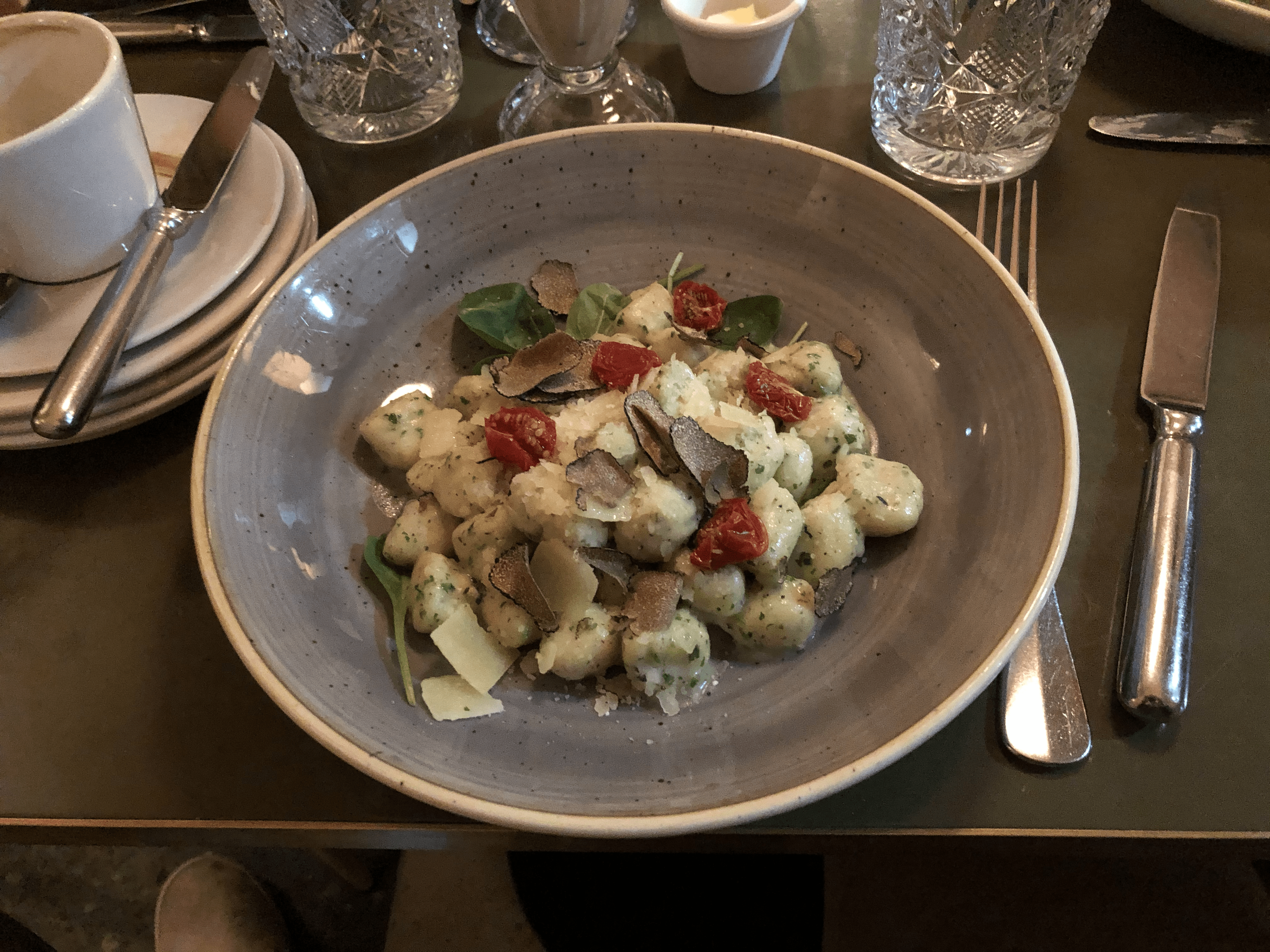
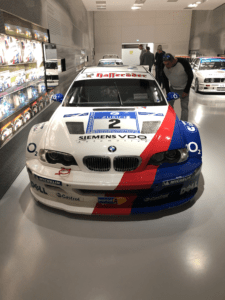 two nights combined. We had breakfast and then left for BMW World. Here, they had on display almost all of their new cars as well as a large BMW and Mini merchandise store. The main reason we were at the BMW World was to be really close to the BMW Museum when it opened, as this would make the timing for the rest of the day easier. We got to see all of the cars and engines that are important to BMW’s history. To save you most of the details of my part of the BMW presentation we gave in class, the most important pieces were the airplane engines that BMW started as a supplier of and the BMW Neue Klasse.
two nights combined. We had breakfast and then left for BMW World. Here, they had on display almost all of their new cars as well as a large BMW and Mini merchandise store. The main reason we were at the BMW World was to be really close to the BMW Museum when it opened, as this would make the timing for the rest of the day easier. We got to see all of the cars and engines that are important to BMW’s history. To save you most of the details of my part of the BMW presentation we gave in class, the most important pieces were the airplane engines that BMW started as a supplier of and the BMW Neue Klasse.  was coffee. (We all ordered a coffee after. It was extremely good.) Then, we had to pick one exhibit in particular to focus on and answer a couple of questions with a partner. My partner and I chose the airplane exhibit, as aerospace is quite cool. There, they had many instantly recognizable planes and flying objects, though replicas and models, such as the Red Baron’s triplane, the Hindenburg, and the Wright Brother’s plane. Once we had all of the information we needed, we decided to rush through everything else that we thought might be interesting, primarily the astronomy and cosmology sections. Getting to learn (and remember) about outer space is one of the best and most interesting topics out there. Once we were done, we met back up with the class, and from there officially went out to the rest of our weekend’s adventures. It’s crazy to me that this is just another part of the HTS 2100 class, and I’m so glad that I decided to sign up for this class where I can learn and visit places that I likely wouldn’t have chosen to go myself.
was coffee. (We all ordered a coffee after. It was extremely good.) Then, we had to pick one exhibit in particular to focus on and answer a couple of questions with a partner. My partner and I chose the airplane exhibit, as aerospace is quite cool. There, they had many instantly recognizable planes and flying objects, though replicas and models, such as the Red Baron’s triplane, the Hindenburg, and the Wright Brother’s plane. Once we had all of the information we needed, we decided to rush through everything else that we thought might be interesting, primarily the astronomy and cosmology sections. Getting to learn (and remember) about outer space is one of the best and most interesting topics out there. Once we were done, we met back up with the class, and from there officially went out to the rest of our weekend’s adventures. It’s crazy to me that this is just another part of the HTS 2100 class, and I’m so glad that I decided to sign up for this class where I can learn and visit places that I likely wouldn’t have chosen to go myself.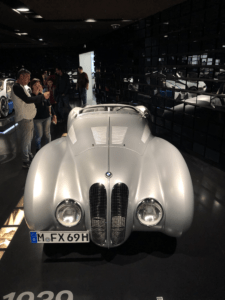
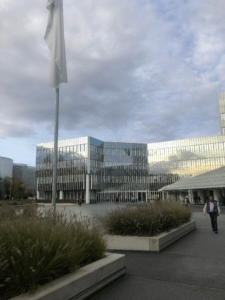 5:38 PM, the 3:30 PM classes got to leave a little early to ensure that we made it with plenty of time. We were all good with trains until our last one, which we thought we were going to miss, got delayed, but people were getting food and so most people waited for the next one anyway. However, a trio of us didn’t get that memo, so we arrived in Munich an hour earlier than everyone else. We finally made it to our hostel at about 1:30 AM, and with breakfast at 7 AM, no one slept too well. From breakfast, we went to the FIZ, which is BMW’s information and R&D headquarters. We met with a few German interns, and they were our tour guides for the day. We went almost immediately to a Georgia Tech alum, Tomohiro, who currently works in acoustics, and his intern Nate, a current Georgia Tech student who was in this class last fall.
5:38 PM, the 3:30 PM classes got to leave a little early to ensure that we made it with plenty of time. We were all good with trains until our last one, which we thought we were going to miss, got delayed, but people were getting food and so most people waited for the next one anyway. However, a trio of us didn’t get that memo, so we arrived in Munich an hour earlier than everyone else. We finally made it to our hostel at about 1:30 AM, and with breakfast at 7 AM, no one slept too well. From breakfast, we went to the FIZ, which is BMW’s information and R&D headquarters. We met with a few German interns, and they were our tour guides for the day. We went almost immediately to a Georgia Tech alum, Tomohiro, who currently works in acoustics, and his intern Nate, a current Georgia Tech student who was in this class last fall. 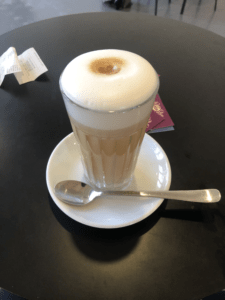 knew no German a year ago definitely made me consider trying to get an internship for sometime next year. After learning about their jobs, we had lunch at the “small” cafeteria in the headquarters. Apparently, the one in the FIZ is substantially larger, but I guess that makes sense, as 15,000 people work there. We watched a few presentations after, and considering the little sleep we all got the previous night and the presentations being immediately after lunch, it was rather difficult to stay awake, but at least the topics were interesting.
knew no German a year ago definitely made me consider trying to get an internship for sometime next year. After learning about their jobs, we had lunch at the “small” cafeteria in the headquarters. Apparently, the one in the FIZ is substantially larger, but I guess that makes sense, as 15,000 people work there. We watched a few presentations after, and considering the little sleep we all got the previous night and the presentations being immediately after lunch, it was rather difficult to stay awake, but at least the topics were interesting. 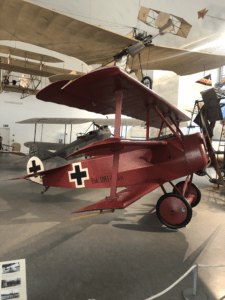 automated, meaning that there are tons of robots doing all of the welding and shaping of the body. We also saw the production of the engines, seats, and the pairing of engines to the transmissions and to the body. While this isn’t the first car factory I’ve toured (I visited Lamborghini before my senior year of high school), it won’t be the last car factory I’ll tour (I’m visiting Porsche around Thanksgiving). And though the cars we saw in production (3 Series coupes and wagons and 4 series coupes) aren’t as interesting to me as, say, a Lamborghini Huracan or a Porsche 911, it was very in depth, and we got to see it all come together, which was very cool.
automated, meaning that there are tons of robots doing all of the welding and shaping of the body. We also saw the production of the engines, seats, and the pairing of engines to the transmissions and to the body. While this isn’t the first car factory I’ve toured (I visited Lamborghini before my senior year of high school), it won’t be the last car factory I’ll tour (I’m visiting Porsche around Thanksgiving). And though the cars we saw in production (3 Series coupes and wagons and 4 series coupes) aren’t as interesting to me as, say, a Lamborghini Huracan or a Porsche 911, it was very in depth, and we got to see it all come together, which was very cool. 